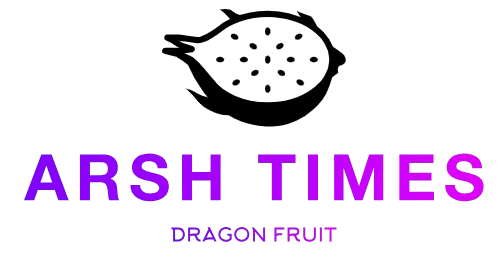Introduction
The bright and unique dragon fruit, known for its striking look and sweet, refreshing flavor, is a favorite among fruit lovers everywhere. But there’s more to this exotic fruit than meets the eye—it has an interesting scientific background. This article takes a closer look at the dragon fruit’s classification, from its kingdom to its species, and explains where it fits in the plant world. We’ll break down the key traits that define each level of its classification, offering an easy-to-understand guide for anyone curious about its botanical story.
Origin and Spread of Dragon Fruit
Native Roots in the Americas
Dragon fruit, known for its eye-catching look, originates from the tropical and subtropical areas of southern Mexico, Central America, and South America. It naturally thrives in countries like Mexico, Guatemala, Costa Rica, and El Salvador.
Journey Around the World
- Arrival in Asia: French missionaries brought dragon fruit to Indochina (now Vietnam, Laos, and Cambodia) in the mid-19th century.
- Wider Cultivation: From Southeast Asia, it spread to countries like India, Thailand, Malaysia, the Philippines, and Taiwan.
- Global Expansion: Today, it’s grown in tropical and subtropical regions worldwide, including parts of the U.S., the Caribbean, Australia, and even some areas in Africa.
Why It Spread Globally
- Striking Appearance: Its vibrant colors and scaly design make it stand out.
- Easy to Grow: Dragon fruit plants adapt well to tropical and subtropical climates, making them versatile.
- Economic Potential: The rising demand for exotic fruits has encouraged commercial farming across many regions.
A Worldwide Favorite
From its beginnings in the Americas, dragon fruit has grown into a globally loved fruit, celebrated for its unique look, health benefits, and adaptability. Its popularity shows no signs of slowing down.
| Taxonomic Level | Classification |
| Kingdom | Plantae |
| Division | Magnoliophyta |
| Class | Liliopsida (Monocotyledons) |
| Order | Caryophyllales |
| Family | Cactaceae (Cactus Family) |
| Genus | Selenicereus (Previously Hylocereus) |
| Species | Selenicereus undatus |
Dragon fruit is classified scientifically like this
- Kingdom: Plantae (all plants)
- Division: Magnoliophyta (flowering plants)
- Class: Liliopsida (plants with one seed leaf, or monocots)
- Order: Caryophyllales
- Family: Cactaceae (the cactus family)
- Genus: Hylocereus
- Species: Hylocereus undatus
1 ) Hylocereus undatus:
Key Features:
Appearance
- Climbing Cactus: A fast-growing plant with long, three-sided, vine-like stems.
- Spines: Small, fine spines along the stems.
- Flowers: Large, fragrant white blooms that open at night.
- Fruit: Oval-shaped with bright red skin and green scales, filled with juicy white flesh and tiny black seeds.
Growth Habits
- Epiphytic: Grows by attaching to other plants for support.
- Rapid Growth: Thrives quickly under the right conditions.
Where It Grows
- Native Origins: Likely from Central and South America, especially Mexico.
- Global Cultivation: Grown in tropical and subtropical areas worldwide, including Southeast Asia, Australia, and parts of the U.S.
Uses
- Edible Fruit: Popular for its sweet fruit, enjoyed fresh, in juices, smoothies, and recipes.
- Decorative Plant: Valued for its striking look and night-blooming flowers.
2) Hylocereus costaricensis
Key Features
Big Stems: This type of dragon fruit has some of the biggest stems compared to others.
Fruit
- Color: Produces deep red fruit.
- Flavor: The flesh is tangy, similar to kiwi, with a sweet aftertaste.
Growth
- Climbing: Grows quickly and needs support to climb.
- Flowers: Blooms at night with large, fragrant white flowers.
3) Hylocereus megalanthus
Key Features
Fruit
- Color: Bright yellow with a scaly outer skin.
- Flavor: White flesh with black seeds, offering a sweet and tangy taste, similar to a mix of kiwi and pear.
Growth
- Climbing: A fast-growing climbing cactus that needs support.
- Flowers: Large, fragrant white flowers that bloom at night.
4) Selenicereus spp.
Key Characteristics
- Climbing Cacti: These cacti climb by growing on trees or other structures for support.
- Night-Blooming: Many species have large, fragrant flowers that bloom at night.
- Fruit Variety: Some species produce edible fruits, like dragon fruit, while others don’t.
- Native Range: Found in tropical and subtropical areas of the Americas.
Examples:
- Selenicereus undatus (formerly Hylocereus undatus) – Commonly known as dragon fruit.
- Selenicereus megalanthus – Produces yellow dragon fruit.
- Selenicereus monacanthus – Another species with edible fruit.
Note:
The Selenicereus genus includes a range of species with unique growth habits and appearances.
Conclusion
To sum up, dragon fruit, known for its bright look and unique taste, is part of the Selenicereus genus in the cactus family. Its scientific name, Selenicereus undatus, helps identify its place in the plant world. This information is important for botanists, researchers, and growers to study, protect, and improve this amazing and growingly popular fruit.








